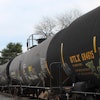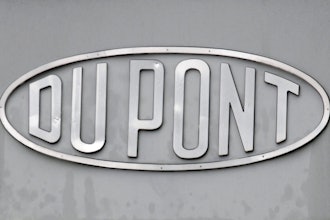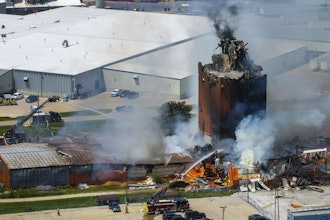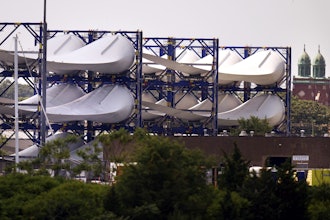Your food plant’s commitment to safety begins at preparedness. How do you prepare to be ... prepared? That’s the purpose of your facility’s emergency action plan (EAP): a required Occupational Safety and Health Administration (OSHA) document that defines employer and employee actions during workplace emergencies.
Now, examine your manufacturing facility’s plan. When was the last time it was updated? How detailed is it?
Missing information or unaddressed hazards are key indicators of a poorly developed EAP. The best emergency action plans are comprehensive and go above and beyond OSHA’s minimum requirement to mitigate damages and ensure employee safety.
As the director of safety for Stellar, I focus on workplace safety day in and day out, ensuring our employees, personnel and projects maintain a level of safety above the industry average. In 2015, Stellar logged more than 1.2 million man hours, and recorded a Days Away, Restrictions and Transfers (DART) rating of .47 and a Total Recordable Injury Rate (TRIR) of 1.26. As of 2014, the North American Industry Classification System (NAICS) standards for DART and TRIR are 1.4 and 2.7, respectively.
A comprehensive, well-thought-out emergency action plan is a foundational element to the success of our safety program.
Start with a vulnerability assessment
The key to building the best emergency action plan lies in knowing where to start: conducting a vulnerability assessment or a facility walkthrough assessing its susceptibility to potential dangers. This analysis helps determine your plant’s weaknesses, as well as the factors that may cause them, ensuring you build a successful EAP from the get-go. Engage your food manufacturing plant’s safety director as well as management-level employees familiar with the facility’s procedures.
Begin by cataloging the facility’s assets, including:
- Processing equipment and machinery
- Food storage areas
- HVAC systems
Rank such assets by monetary value to determine which aspects of the plant warrant the most attention.
During your vulnerability assessments, check for your asset’s existing problem areas, as well. At Stellar, we often conduct mechanical integrity inspections to check for any deficiencies that may cause significant issues. These inspections include testing critical systems, such as ammonia refrigeration equipment, and crafting a full report of operating conditions.
When conducting your analysis, consider your plant’s susceptibility to both natural disasters and man-made factors. Human error can cause equally severe damage as natural disasters. Keep in mind, food plants are specifically vulnerable to situations such as:
- Power outages — A power outage is a major inconvenience to any facility, but in a food plant that requires refrigerated storage, a power failure could cause spoiled inventory. It’s crucial to have a backup generator on-site or a designated off-site location for safe storage.
- Fires — A fire can be particularly threatening at food plants due to the presence of highly flammable elements such as ammonia. A catastrophic explosion is likely to occur if fire reaches such systems.
- Water contamination — Most food plants rely on a large supply of water for food processing. A leak in the pipes or a malfunctioning purification system could cause water contamination. Your EAP should detail what symptoms employees must recognize in the event of contamination, such as cloudy consistency or discoloration. Have a water decontamination plan in place, in addition to a backup water resource.
- Purposeful attacks — While purposeful attacks to food processing plants or attempts to contaminate food products are rare (for example, by activists or disgruntled employees), you must still be prepared. Use the CARVER method to help assess these threats.
The specifications of your EAP should be based on problem areas uncovered by initial analyses. Lead off your EAP by addressing the most significant situation, including a step-by-step plan to handle it. Then, you can use that plan as a guide for the remaining potential emergencies.
5 key elements of a comprehensive EAP for your food plant
EAPs that meet minimum requirements may include emergency information and procedures, but still may not contain enough detail to ensure the safest response to dangerous situations. Your goal in creating a comprehensive plan is to eliminate all confusion and hesitancy in emergency response. A non-comprehensive plan — one lacking extensive instruction or failing to address each emergency — may add confusion to the situation.
While a comprehensive EAP will include more than what is detailed below, you should focus on five crucial elements for every identified emergency:
1. Procedures for reporting the emergency — Some facilities’ alarms are designed to automatically notify local emergency responders as soon as they are triggered. However, if they do not, designated personnel will have to do so. Your EAP should list the appropriate authorities for specific emergencies.
For example, a chemical leak requires a trained HAZMAT team, which may not be as easy to reach as the fire department. Stellar’s team of experts includes HAZMAT-trained technicians. It’s a best practice for every plant to have a team of personnel trained for chemical releases, especially if the plant is in a remote location and emergency response may be delayed.
However, if you do not have a HAZMAT team in-house, ensure contact information for appropriate emergency responders is readily available in your EAP. You do not want your workers scrambling to find this information during a dangerous situation.
Your EAP should also include an explanation of your facility’s alarm system. If there are multiple alarm systems, or distinctive noises, clearly describe:
- The significance of each alarm
- The respective procedures to follow for each alarm
It’s also beneficial to use a facility-wide public address system as reinforcement to alarms. This allows emergency announcements to be quickly broadcasted to everyone at once.
2. Designated emergency responders — Without organized instruction coming from one or two individuals, people tend to panic in an emergency. Assign qualified individuals — responsible higher-level workers who are very familiar with emergency procedures — to the following emergency roles:
- Emergency coordinators — Emergency coordinators assume all responsibility for directing emergency procedures. Designate several emergency coordinators to ensure one of them is on-site during all shifts. Their responsibilities include:
- Assessing the severity of the emergency
- Supervising all evacuation efforts
- Coordinating outside emergency services
- Directing the shutdown of plant operations as necessary
- Evacuation wardens — Designate individuals to oversee evacuation procedures and ensure everyone safely exits the facility. Generally, one evacuation warden for every 20 employees is adequate.
- Medical assistance providers — Make arrangements with nearby medical clinics to ensure that injured employees receive treatment quickly. However, it’s best to have medical personnel on-site capable of administering CPR and treating lacerations and burns. You can engage the American Red Cross, local safety councils or the fire department to provide medical training.
- Critical operations shutdown personnel — Most food plants include at least one critical operation that involves dangerous or otherwise important elements. Determine the individual(s) responsible for shutting down aspects such as:
- Gas utilities
- Electric utilities
- Refrigeration systems using ammonia or carbon dioxide
3. Evacuation routes and rally points — Evacuation routes must be clearly marked and wide enough to accommodate a large number of evacuating personnel. Ensure your exit routes are unlikely to expose employees to additional hazards. Without a clearly mapped route, employees may not know how to safely and quickly exit the building. Also be sure to consider a special route for people with disabilities.
Additionally, identify rally points, or locations at which all employees should regroup after they’ve safely exited the building. The key to the evacuation process is to ensure everyone knows where to go, how to get there and how to stay together during the emergency.
4. Accounting for all building occupants — Do not allow employees to leave the designated rally points until it has been documented that they have safely exited the building.
On Stellar projects, we harp on accountability. Our employees are required to sign a Safe Plan of Action (SPA) every morning at construction sites, which helps determine who is on-site each day and their respective role.
It’s also necessary to have all guests — clients, plant tours, vendors, etc. — sign in and out to document every person inside the building. Though a SPA isn’t required by law, we’ve found it’s a consistent recordkeeping method that helps improve accountability.
5. Data and information backup technology — Any emergency could potentially wipe out vital data or company information. It’s necessary to devise a method for backing up that information to secondary systems.
At Stellar, we use a digital process safety management (PSM) system that involves cloud-based solutions to collect and monitor compliance data. An all-in-one system such as this has provisions for off-site data backup, which is crucial during emergencies.
Employee emergency training
OSHA requires that every worksite administer a safety orientation. However, constantly reinforcing initial training is necessary to ensure employees are fully aware of safety measures. Doing so will contribute to creating a comprehensive EAP: it can be effective only if it’s thoroughly and consistently communicated. Conduct periodic training sessions and devise a method to reiterate important emergency procedures.
Many construction workers do not have experience working in a food plant. They must be aware of dangers specific to food processing equipment, such as refrigeration systems utilizing ammonia. Ensure they have a working understanding of how the plant’s critical processes work and what dangers there are in working with and around them.
On Stellar construction projects, for example, we post a summarized version of the emergency action plan inside every construction site trailer to ensure personnel is always in-the-know when it comes to safety. Food plant owners can take similar action by posting a shortened version of their EAP on the walls of each plant area. A thorough summary should include recognized hazards, high-level emergency procedures and evacuation routes.
How to build a project-specific EAP
Construction projects involving external partners — design-builders, vendors or other contractors — create additional risks in an already complex work environment. During renovations or additions, it’s crucial that everyone involved is on the same page regarding safety measures.
However, design-builders have their own emergency action plans, which may cause discrepancies. To avoid complicating safety procedures, establish an agreed-upon EAP before the project begins.
Ensure plans are streamlined by holding meetings involving:
- The plant’s safety manager
- The plant’s general manager
- The plant’s safety representative
- The design-builder’s project manager
- The design-builder’s site superintendent
- The design-builder’s safety director
These meetings will help create a project-specific EAP with needed input from both food plant management and the outside contractor. Without a mutually understood EAP, it becomes unclear how to safely handle a dangerous situation.
For example: a renovation project may interrupt a food plant’s established evacuation routes. It’s crucial to identify construction areas and how to adjust evacuation routes accordingly. If this is not done, food plant workers may be evacuating into a separate dangerous environment, rather than to safety.
Update and communicate your EAP
Everyone working in the facility — employees, guests and vendors — must be on the same page at all times when it comes to emergency procedures. But before you begin teaching your EAP, you must ensure it isn’t lacking vital information for any potential emergency; it will do more harm than good when disaster strikes. Review your EAP periodically to ensure it goes above and beyond the bare minimum, and remains up to date in accordance to any changes your food plant undergoes.
To learn more about how to build the best possible emergency action plan, feel free to email me at [email protected], or visit Stellar’s safety page.























